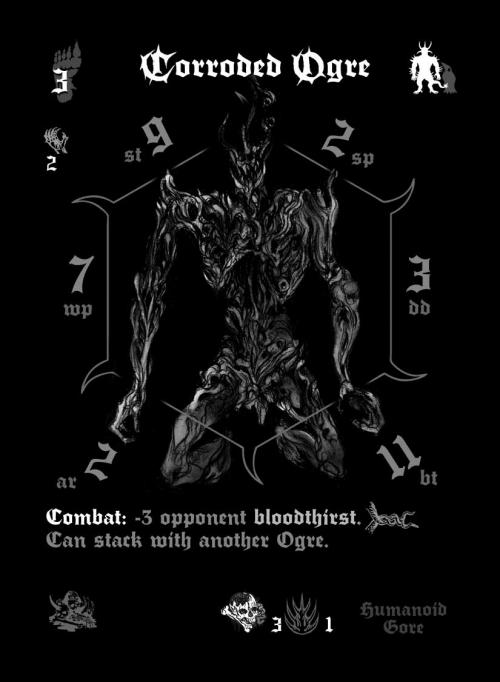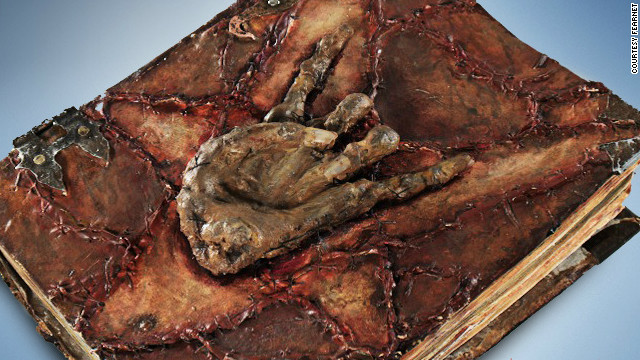A piece of cloth, a length of thread, a needle. Start there.
The cloth has two dimensions - length and breadth.
The thread has one dimension - length.
The needle allows the thread to jump instantly from one location in the length and breadth of the cloth, to another, by traversing a higher, third dimension.
In three dimensions we pinch the cloth so that two points are adjacent in the third dimension, though their relative positions on the cloth remain the same. The needle draws the thread and connects them. We release the cloth and it returns to its original shape. Now that same, single dimension string emerges in two places on the two dimensional cloth without appearing to traverse the distance between them.
Do this again and again. Dozens and dozens of threads appear and disappear, dancing back and forth through the cloth. They reveal their single dimension again and again at different points across the cloth to give it colour, to differentiate sections within it, give them structure and content. Gradually we create a tapestry, and give the impression that the differences, colours, structures are all features of the two dimensional cloth. This is not true. Then cloth has colour and form because it is interwoven by many, many, single-dimension strings.
The world is a four dimensional fabric and everything within it is the result of other, immanent dimensions revealing themselves, like threads of complex colours emerging through the fabric, then returning into the place outside it and emerging again and again at an unlimited number of points in space and time. A mountain is a point on the thread that is all possible mountains, and so is every other mountain, and they are separated from each other not only by their position in the four dimensional world but also the distance from one another along the thread. Each instance of fire is a point along the line of all fires.
In dimensional travel an adventurer exploits this fact to defy the four dimensional world and travel between points that are distant in space or time. A dimensional gate, and spells that allow faster-than-light communication or travel through time, acts like a needle. The magic has two stages - first, it either creates or reveals two points in four dimensional space that are adjacent in the higher space beyond our cosmos. Then it alters the energy state of one of the single-dimensional threads that connect the two points to permit four dimensional entities to travel the miniscule distance in higher space needed to move between the points.
This is incredibly dangerous; even slight corruption of the energy signal will result in hideous (but hardly ever fatal) mutilation and mutation of the subjects travelling across the gate. Altering the energy state of a dimension can have catastrophic side-effects as well, as changes ripple throughout all the other points in space and time where that dimension is immanent, potentially unleashing chaos throughout the cosmos as changes propagate without limit. And the four dimensional world is not infinitely flexible - by contorting the world in higher space in order to bring two distant points adjacent it is entirely possible to rip and tear it in others, creating black holes that will consume material entities, and allow entry for the unimaginably strange things that live in the higher space beyond.
The single-dimension threads that give our world texture also exist outside four dimensional space - the realm into which the threads disappear when they pass to the far side of the fabric. They are suspended in the higher dimension which contains the four dimensional worlds that constitute our (and all possible) worlds. In this realm of infinite infinities almost everything is chaotic and uninhabitable void, but there are also unlimited domains that have form and coherence which a four-dimensional entity could understand and conceivably survive in. Bundles of dimensions knit together to create planes of endlessly repeated and iterated forms, weaving strange properties into a cloth that mimics the function of the four standard dimensions and gives the impression of space and time. In places the planes intersect with four-dimensional worlds. A mountain beyond the plateau of Leng might open onto a plane of infinite mountains, each one subtly distinct, each one a concatenation of the dimensions that gave the first mountain its form.
A connection between a plane and the world is almost always a naturally occurring feature - some wizards speculate that a planar conjunction is the point at which a particular set of dimensions enter our world for the first time. By finding these connection points and making themselves aware of the plane beyond, through magic, scarification rituals or drug trances, an adventurer can pass outside the normal world and traverse a space outside space. Planar travel is at once safer and more dangerous than dimensional travel.
The plane of water is an infinitely vast and deep ocean filled with drifting predators and eyeless killers on a scale beyond earthly reckoning. The infinite, yet relatively tiny area where it is adjacent to the plane of air is filled with vegetation, plankton and drifting civilizations afloat in cities carved into the chambers of nautili and the shells of gargantuan horse-shoe crabs. An infinite distance
below this the cosmically black ocean bed crawls with crustaceans the size of cathedrals feeding on the carcasses of amorphous creatures vaster than empires. The mariana trench opens into this plane and allows passage for its most miniscule entities into the material world - creatures like krakens, aboleths or the avanc.
The labyrinth plane is the nightmare and the dream of every adventure. It is a land of dungeons, of cells, chambers, pits, tunnels, catacombs and crevasses sewn together without human logic. It extends in all directions, passages and tunnels sometimes leading on for hundreds or thousands of miles before doubling back or simply ending in a dead end, and in other places intricately and almost intelligently laid out to resemble palaces, temples and lairs. The few living denizens are brutal and hardy predators that can survive for aeons without feeding, then emerge from hybernation in a storm of teeth, limbs and hunger. The undead are everywhere, mindlessly patrolling or organised under the command of greater creatures that use their tireless labour to hunt out exits into material worlds. There are cruel and unnatural traps that would be useless to protect an actual trove, death machines that swing into life on unpredictable triggers in defence of empty alcoves, generated by the inevitable logic of the plane. Treasure is abundant but often absurd - a shining statuette may reveal itself as a solidified mass of slime, a gleaming sword sets the wielder on fire and turns their beard into mice, and a whole chamber tiled with black flag stones is actually made from gold, hidden underneath a layer of radioactive black paint. The greatest dungeon makers of the ages pride themselves when they discover a connection from their dungeon into the labyrinth plane - though they seldom return.
The Westerland is an infinite wilderness of mountains, forests, cold rivers and lost ruins. Any adventurer who heads West has into the unknown has a chance of arriving here. It is a land with a thousand civilizations, each one a tiny city state founded by some long-dead adventurer who carved herself a little stable ground among the turmoil. Nomadic groups travel across this plane in great migrations once in a generation, arriving with news of distant cities, with never-before-seen trade goods, with lethal weapons and vile appetites. In the Westerland there is always a ruined keep, there is always a mysterious cave, there is always something unknown. The wilderness cannot be trained.
Dimensional travel across a plane is impossible: there is no way to bend a plane in higher space to connect two points within it as it is not coherent four-dimensional world. But planes connect to many worlds, and it is possible for a traveller to cover a great distance within a plane, enter a world and travel through that, and re-enter the plane at a far distant point. The secret roads between worlds and planes are among the most jealously guarded secrets of archmages, demons and gods.
It is possible for a group of travellers to walk those roads in complete ignorance. To a group who become lost in a worldly wildnerness they may notice nothing as they leave normal space and enter the infinite Westerlands. A group could quest for years before deciding to turn back home, only to discover there is no road and they have no home, and they are far away from the world they once left. They hear of a magical shining doorway at the bottom of an ancient ruin, but as they carve their way deeper and deeper down they begin to suspect that there is no bottom to the ruin, only ever deeper darkness, limitless depths of cruel and inhuman traps and passages. Lost and confused they strike out in search of some missed branch in their path only to emerge through a ransacked tomb into a desert of ash. The carved faces of long-dead kings lie buried in the black sand, and fat white worms dance around them in mourning.
For those who travel the planes there can be no return home. Merely stepping beyond the mortal world changes them. They know what every sentient entity has feared since birth - that the universe is so vast as to render every achievement of their species below meaningless, and that the universe is itself only one among unlimited trillions, and the collection of those infinite universes is utterly insignificant compared to the infinite planes beyond, and that if most of the world is hostile and most of the universe is empty and most of the planes are chaos, how much more hostile and empty and chaotic must be the higher realms that hold all those numberless infinities?
"The most merciful thing in the world, I think, is the inability of the human mind to correlate all its contents. We live on a placid island of ignorance in the midst of black seas of infinity, and it was not meant that we should voyage far. The sciences, each straining in its own direction, have hitherto harmed us little; but some day the piecing together of dissociated knowledge will open up such terrifying vistas of reality, and of our frightful position therein, that we shall either go mad from the revelation or flee from the deadly light into the peace and safety of a new dark age." - Francis Wayland Thurston, investigator





